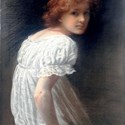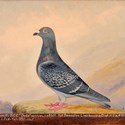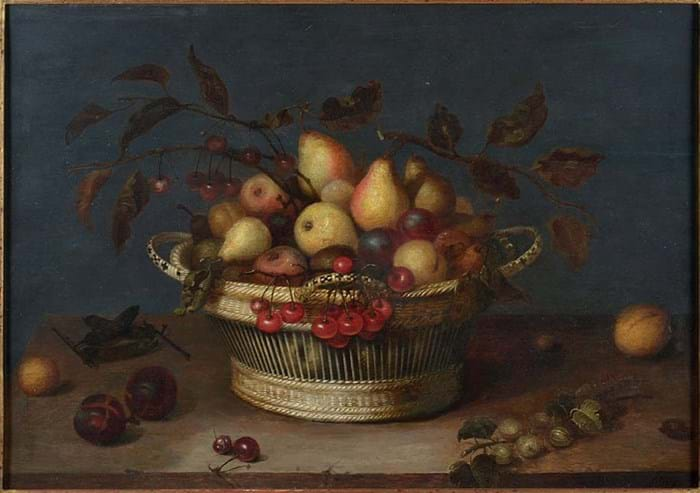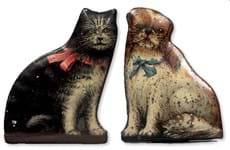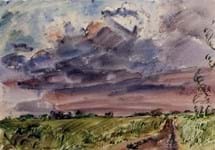At his memorial exhibition in 1914, The Observer wrote that his best work was the “careful and masterly drawings” executed in chalk – not his Symbolist watercolours. “It is when he applies his Pre-Raphaelite precision to portrait drawings… that Hughes commands most admiration… These things are of lasting value, and no fluctuations in taste can affect their appreciation.”
The rise in Pre-Raphaelite popularity has created a premium for Hughes’ symbolist watercolours. With subjects of classical myths, Shakespeare and other literary themes, he executed these under the influence of Edward Burne-Jones and the other Pre-Raphaelites.
A fortnight ago in London, Sotheby’s offered Hughes’ The Weary Moon, a watercolour of the goddess Selene, inspired by a series of works by Burne-Jones. It sold for a premium-inclusive £143,750 on July 13.
Meanwhile, Hughes’ chalk portraits are among the more affordable works currently on the market. Boningtons (20% buyer’s premium) of Epping in Essex included a privately consigned, market-fresh chalk work of a seated girl on June 28.
“This was a completely different ball game financially to the mystical-style fairy paintings, which have made £300,000 in the past,” said Boningtons’ picture specialist Luke Bodalbhai. Nonetheless, the intimate 2ft x 18½in (61 x 47cm) coloured chalk on paper, Jill – a study, was billed by the auction house as an ‘important addition’ to the artist’s oeuvre.
Moreover, the portrait’s intimate nature and directness suggested to Bodalbhai that it might have been painted as a gift for a friend.
Exhibited at The Royal Watercolour Society in 1904, the same year it was dated, it had been in the same private collection since at least the 1980s.
In a good size and condition, it sold to one of two private bidders on the phone within estimate at £11,000. According to The Art Sales Index, the price is among the highest paid at auction for a chalk portrait of a child by Hughes.
The sale also featured an oil study of a sleeping baby by the Pre-Raphaelite John Everett Millais (1829-96). Depicting the son of Millais’ colleague, the artist Robert Barnes, it was not deemed a commercial subject and sold on bottom estimate at £3000.
The wicker basket man
Elsewhere, the top lot among the pictures was a decorative still-life, identified as by the Dutch artist Johannes Bouman (1601-58).
Depicting a wicker basket laden with fruit, the 18½in x 2ft 3in (47 x 69cm) oil on panel is typical of Bouman’s style, who often presented his still-life subjects in wicker baskets identical to the one at Boningtons.
Estimated at £1000-1500, it came down to two bidders from the continent, who pursued it to £15,500.
Prices for such works by Bouman can fluctuate, often depending on condition, size and the quality of the image depicted.
In November last year, Christie’s Amsterdam sold a slightly larger example containing a monkey for a premium-inclusive €40,000 (then around £34,780), while Bonhams sold a lighter and more modest still-life for £8000 in July 2015.
A collection of eight portraits of racing pigeons proved popular when they all flew to a total of £9100. They had been painted by Edward Henry Windred (1875-1953), a renowned painter of racing pigeons in the 1920s and ’30s.
The collection had belonged to the vendor’s great-grandfather, a Mr G Bennetts. Each 14 x 18in (35 x 46cm) oil on canvas was inscribed with the pigeon’s name and detailed its winning flight and the date.
Grouped into pairs, the better preserved were the most sought-after, with two pairs selling to separate private buyers for £3000 each, against £800-1200 estimates.




